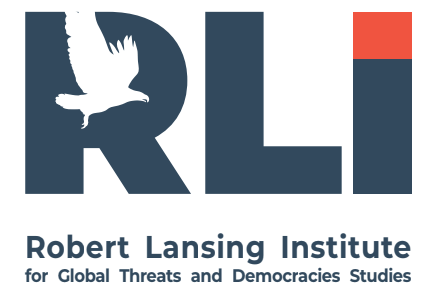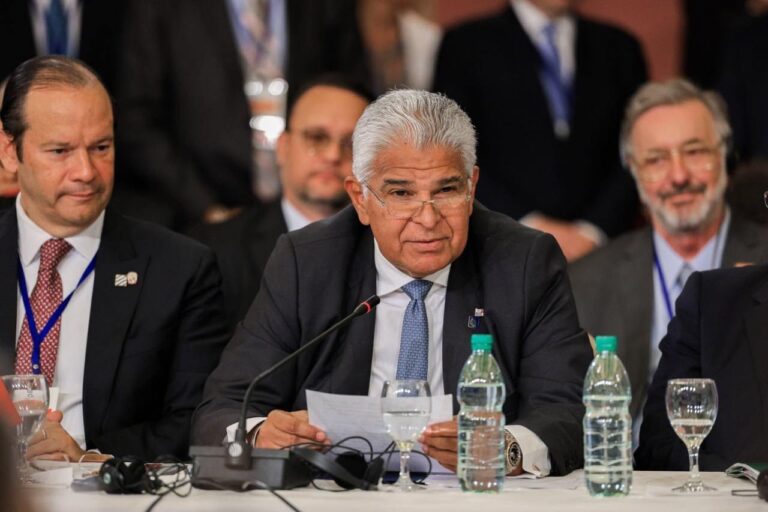China’s involvement in Panama has expanded notably over recent years, encompassing economic investments, infrastructure projects, and diplomatic engagements. This growing presence has prompted discussions about the extent and implications of Chinese influence in the region.
Assessing the precise annual amounts of Chinese investments in Panama since 2017 is challenging due to limited publicly available data. However, available information provides some insights:
- Total Investment: As of 2022, Panama has received approximately $2.5 billion in investments from China since 2005, marking the largest Chinese investment in the Central American region.
- Foreign Direct Investment (FDI) Stock: In 2023, the total stock of Chinese FDI in Panama amounted to around $1.4 billion.
Economic and Infrastructure Investments:
– Port Operations:Hutchison Ports, a Hong Kong-based company, operates ports at both ends of the Panama Canal. In response to concerns about Chinese influence, the Panamanian government initiated an audit of Hutchison Ports to ensure transparency and efficiency.
– Technology and Surveillance: Chinese technology companies, such as Huawei, have contributed to Panama’s infrastructure by donating security cameras and monitoring equipment. While these contributions enhance security, they also raise concerns about potential avenues for espionage.
Diplomatic Relations:
– Establishment of Ties: In June 2017, Panama established diplomatic relations with the People’s Republic of China, shifting away from previous ties with Taiwan. This move led to increased Chinese investments and a stronger diplomatic presence in Panama.
– Bilateral Agreements: During a visit by Chinese President Xi Jinping to Panama, over a dozen agreements were signed, including a feasibility study for a railway connecting Panama City to David, with potential extensions into Central America.
Espionage Concerns:
The presence of Chinese companies and technology in strategic areas has led to apprehensions about potential espionage activities. Instances of Chinese espionage in other regions contribute to these concerns, although specific cases in Panama are not extensively documented.
U.S. Perspectives:
The United States has expressed unease regarding China’s expanding role in Panama, particularly concerning the Panama Canal’s strategic importance. U.S. officials have raised questions about the implications of Chinese investments and their potential impact on regional security and trade dynamics.
Panama’s Position: Panama maintains that it retains full sovereignty over the Panama Canal and that partnerships with Chinese firms are based on mutual economic interests. Panamanian authorities emphasize that all operational decisions are made independently, aiming to balance relations with both China and the United States.
,While China’s presence in Panama is significant and multifaceted, it is characterized by economic and diplomatic engagements. Concerns about infiltration and espionage exist but are primarily based on broader geopolitical considerations rather than specific documented incidents within Panama.
Panama’s interest in Chinese investments is rooted in several economic and strategic factors. These motivations are shaped by Panama’s role as a global trade hub, its strategic geographic location, and its economic ambitions. Here’s a breakdown:
1. Enhancing Infrastructure Development
- Modernizing Ports and Logistics: With the Panama Canal as a critical artery of global trade, Panama seeks Chinese investments to modernize and expand its port facilities, logistics hubs, and related infrastructure. Chinese companies, such as China Harbour Engineering Company, have been involved in port projects in Panama, boosting its status as a logistics powerhouse.
- Expanding Transportation Networks: Chinese investment in roads, railways, and airports complements Panama’s infrastructure, facilitating better connectivity within the country and with neighboring regions.
2. Diversifying Economic Partnerships
- Reducing U.S. Dependency: While the U.S. remains a major trade and investment partner, Panama is interested in diversifying its economic relationships. Closer ties with China provide a counterbalance and reduce reliance on any single economic power.
- Tapping into Chinese Expertise: Chinese firms often bring competitive pricing, technological expertise, and experience in large-scale projects, making them attractive partners for Panama.
3. Attracting Investment in Key Sectors
- Energy: Chinese companies have shown interest in renewable energy projects, including solar and wind energy, which align with Panama’s sustainability goals.
- Tourism: Chinese investments in hospitality and tourism infrastructure aim to attract Chinese tourists, leveraging Panama’s natural beauty and its growing appeal as a global destination.
4. Leveraging Free Trade Agreement Talks
- Panama established diplomatic relations with China in 2017, ending its recognition of Taiwan. Since then, discussions on a potential free trade agreement (FTA) have been underway. An FTA would further enhance trade flows and encourage more Chinese businesses to invest in Panama.
5. Strengthening Financial Ties
- Becoming a Financial Hub: Panama aims to position itself as a financial gateway for Chinese businesses entering Latin America. Chinese banks, such as the Bank of China, have already established a presence in the country.
- Attracting Capital Flows: Chinese investment provides access to capital for large-scale projects, boosting Panama’s economic growth and job creation.
6. Expanding Influence in Latin America
- Geopolitical Positioning: By engaging with China, Panama strengthens its role as a bridge between Latin America and Asia. It positions itself as a key player in China’s Belt and Road Initiative (BRI), further integrating into global trade networks.
Potential Risks and Challenges
While Chinese investments bring significant benefits, Panama must navigate potential risks, including:
- Debt Dependence: Avoiding unsustainable debt levels linked to large-scale Chinese infrastructure projects.
- Strategic Vulnerabilities: Managing concerns over excessive reliance on Chinese investments in critical sectors like ports and telecommunications.
- Balancing Relationships: Maintaining strong ties with the U.S. while deepening economic engagement with China.
In summary, Panama views Chinese investments as an opportunity to modernize its infrastructure, diversify its economy, and enhance its global standing. However, balancing these benefits with potential geopolitical and economic risks remains a critical challenge.
China’s interest in the Panama Canal poses several potential threats to U.S. strategic, economic, and geopolitical interests. The Panama Canal is a critical chokepoint for global trade and a symbol of U.S. influence in the Western Hemisphere. Increased Chinese involvement could undermine U.S. dominance in the region. Here are the primary concerns:
—
1. Strategic Control Over a Key Maritime Chokepoint
– Disruption of U.S. Military and Trade Routes: The Panama Canal is vital for U.S. military mobility, particularly for transferring naval assets between the Atlantic and Pacific Oceans. If China gains significant control or influence over canal operations, it could potentially disrupt U.S. strategic movements.
– Leveraging Control During Conflicts: In a geopolitical or military standoff, Chinese control could theoretically be used to block or delay U.S. access to the canal, impacting both military and commercial operations.
—
2. Economic Risks to U.S. Trade
– Influence Over Global Trade Routes: The Panama Canal is crucial for U.S. trade, especially with Asia. Chinese influence could result in preferential treatment for Chinese vessels or goods, potentially disadvantaging U.S. shipping companies and increasing costs.
– Economic Leverage: By investing in canal operations or infrastructure, China could use its position to influence trade terms or extract concessions from the U.S. and other countries dependent on the canal.
3. Expansion of Chinese Geopolitical Influence
– Undermining U.S. Influence in Latin America: Increased Chinese involvement in Panama reflects Beijing’s broader strategy to expand its influence in Latin America, traditionally seen as the U.S.’s sphere of influence. This challenges U.S. dominance and erodes its diplomatic leverage in the region.
– Belt and Road Initiative (BRI): China’s engagement in Panama is part of its global BRI strategy, aimed at establishing trade and infrastructure networks that connect China with key markets. By integrating Panama into this network, China strengthens its foothold in the Western Hemisphere.
—
4. Potential Espionage and Cybersecurity Risks
– Data and Communications Vulnerabilities: If Chinese companies gain control of port facilities, logistics hubs, or telecommunications infrastructure linked to the canal, it could provide opportunities for espionage or data interception.
– Surveillance Risks: Infrastructure projects often involve advanced technology systems, which could be used for monitoring or surveillance activities in the region.
5. Economic Dependency on China
– Debt Diplomacy: Panama could become economically dependent on China through large-scale infrastructure investments tied to the canal. This could give Beijing undue influence over Panama’s policies, potentially aligning them with Chinese interests rather than U.S. priorities.
– Erosion of Sovereignty: Chinese investment often comes with strings attached, potentially compromising Panama’s ability to maintain neutral or pro-U.S. policies.
6. Strategic Partnerships with Regional Rivals
– Military Presence Concerns: While China does not currently have a military presence in Panama, its investments could pave the way for future military or quasi-military activities, such as port access for Chinese naval vessels.
– Collaboration with Adversaries: Increased Chinese presence in Panama could facilitate coordination with other U.S. rivals, such as Russia, in undermining U.S. influence in the Americas.
—
7. Undermining U.S.-Panama Relations
– Diplomatic Shifts: By establishing deeper economic ties with Panama, China could weaken Panama’s traditionally strong ties with the U.S., making it less likely to align with U.S. positions on global issues.
– Economic Competition: Chinese investments could outpace U.S. efforts in Panama, reducing American companies’ opportunities and influence in the region.
China’s growing interest in the Panama Canal represents a multifaceted challenge for the U.S., encompassing strategic, economic, and geopolitical dimensions. To counter these threats, the U.S. must strengthen its presence in Panama, deepen economic and diplomatic ties, and collaborate with regional partners to ensure the canal remains a neutral and secure asset. Balancing competition with China while safeguarding U.S. Interests will require sustained attention and strategic action.
The probability of American intervention in Panama, whether diplomatic, economic, or military, depends on the context, severity of the situation, and the specific challenges to U.S. interests. While a direct military intervention is highly unlikely under current circumstances, the U.S. could consider other forms of intervention if its strategic, economic, or geopolitical interests are significantly threatened.
—
Factors That Could Increase the Probability of Intervention
1. Strategic Threats to the Panama Canal
– If Chinese investments or influence in Panama escalate to the point where the Panama Canal’s neutrality or access for U.S. ships is compromised, the U.S. may view intervention as necessary to safeguard this vital maritime chokepoint.
– Any foreign military presence (e.g., Chinese or Russian naval bases) in Panama would significantly heighten U.S. concerns and could provoke a response.
2. Political Instability in Panama
– Widespread political unrest, corruption, or a governance crisis that jeopardizes the canal’s operations could prompt the U.S. to intervene diplomatically or economically, and in extreme cases, militarily, to stabilize the situation.
– A Panamanian government that openly aligns with adversaries like China or Russia might lead to heightened U.S. involvement.
3. Economic Dependencies and Debt Diplomacy
– If Panama becomes economically dependent on China through debt diplomacy, the U.S. may respond by increasing economic aid or imposing sanctions to counterbalance Beijing’s influence.
4. Regional Geopolitical Dynamics
– A broader escalation of U.S.-China competition in the Western Hemisphere could make Panama a flashpoint for influence, increasing the likelihood of U.S. intervention to counter Chinese encroachment.
– Growing anti-U.S. sentiment in Latin America, coupled with increased Chinese investments, could push Washington to take more assertive actions to protect its regional interests.
Forms of Likely U.S. Intervention:
1. Diplomatic Intervention
– Negotiating with the Panamanian government to limit foreign influence and preserve canal neutrality.
– Strengthening U.S.-Panama ties through trade agreements, security partnerships, and diplomatic initiatives.
2. Economic Intervention
– Offering economic aid, infrastructure investments, or favorable trade deals to counterbalance Chinese investments.
– Imposing sanctions or trade restrictions if Panama’s policies threaten U.S. interests.
3. Military Presence or Assistance
– Increased military cooperation, joint exercises, or stationing additional U.S. personnel to safeguard the canal and deter foreign influence.
– Direct military intervention is unlikely unless there is an immediate and severe threat to U.S. security or the canal’s operations.
Probability of Military Intervention
The probability of a direct U.S. military intervention in Panama is low to very low under current conditions, given:
– The absence of a direct military threat.
– The strong historical and diplomatic ties between the U.S. and Panama.
– The preference for resolving disputes through economic and diplomatic channels.
However, this probability could rise in the event of:
– A severe crisis threatening the canal’s operations or neutrality.
– Foreign military presence or overt control over canal operations by U.S. adversaries.
– A collapse of the Panamanian government or extreme instability in the region.
While the probability of a military intervention is low, the U.S. is likely to remain vigilant and proactive in Panama through diplomatic, economic, and security measures. Washington’s goal will be to ensure the canal’s neutrality, protect its regional influence, and counteract foreign interference without resorting to direct military action unless absolutely necessary.
Factors Influencing China’s Actions
1. Strategic Importance of Panama
Chinese economic stakes in Panama are more strategic than military; the primary focus is on maintaining influence through investments and trade, rather than territorial or military ambitions.
China prefers economic leverage and diplomatic engagement to secure its interests in Latin America. Military action would contradict its narrative of peaceful development and harm its relationships with other countries in the region.
Any Chinese military presence in Panama would be perceived as a direct challenge to U.S. influence in its traditional sphere of dominance, triggering significant backlash from Washington and its allies.
- Latin America has traditionally avoided becoming a battleground for military competition between great powers, focusing instead on economic and diplomatic ties.
Constraints on Chinese Military Action
Any Chinese military involvement would likely provoke a strong U.S. response, ranging from diplomatic measures to potential military escalation.
- The U.S. maintains robust military and intelligence capabilities in the region, creating a significant deterrent against Chinese military actions.
A military intervention by China would likely alienate Latin American countries, many of which value their sovereignty and are wary of foreign military influence.
It would damage China’s global reputation, undermining its efforts to portray itself as a responsible global power.
China lacks the infrastructure, alliances, and logistical capacity to project military power effectively in the Western Hemisphere.
Unlike the U.S., which has a longstanding presence in the region, China would face significant operational hurdles in deploying and sustaining forces in Panama.
Potential Actions Short of Military Intervention
- Thus, China could use diplomatic channels to protect its investments and influence Panama’s policies, potentially through economic incentives or leveraging existing partnerships.
- Beijing could impose economic consequences, such as trade restrictions or reduced investment, to pressure Panama or counteract adverse developments.
China might resort to intelligence-gathering or cyber operations to monitor U.S. actions and protect its interests in Panama.
Instead of military forces, China could use private security firms to safeguard critical infrastructure or personnel, avoiding the political ramifications of a military presence.
Scenarios Where Military Action Becomes Plausible
While unlikely, military action could become a consideration under extreme circumstances, such as:
- A direct threat to Chinese personnel or assets in Panama.
- A broader global conflict where U.S.-China relations have severely deteriorated, and the Western Hemisphere becomes a contested zone.
Even in these scenarios, China would likely prioritize diplomatic and economic measures over military intervention, given the risks involved.
China is unlikely to act militarily to protect its interests in Panama, as the risks far outweigh the benefits. Beijing is more likely to rely on economic leverage, diplomatic engagement, and indirect methods to secure its position in the region. Any overt military action would risk provoking a significant U.S. response and undermining China’s strategic goals in Latin America and beyond.




